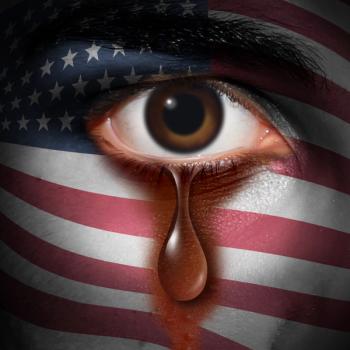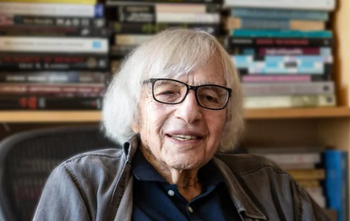
Death and the Psychiatrist
Is a "good death" possible in the face of terminal illness?
PSYCHIATRIC VIEWS ON THE NEWS
What difference does it make if one is terminal? We are all terminal.
–Jack Kevorkian, MD
Recently, I had the daunting and unexpected opportunity to be a discussant at The Farewell Party-a movie about euthanasia. Why not a clergy member instead or in addition, I wondered? I decided that it must have been the organizer’s anticipation of how emotionally difficult the subject may be. After all, she decided to schedule it at an off time to keep the crowd down.
There turned out to be not only one psychiatrist, but two of us! That might help, I thought, since as one of us talked, the other could watch and assess how the audience was reacting. The literal translation of the film’s Hebrew title is “A Good Death”-a serious comedy. I wondered if we psychiatrists could help.
After previewing the movie, I did some due diligence about the current role of psychiatrists in death and dying in general, as well as euthanasia specifically. I did not anticipate, though, that I would also have to look so much into myself.
Suicide and homicide
Because we psychiatrists don’t encounter as much death among our patients as other physicians, death can become more poignant for us. Completed suicide is the most common death related to clinical psychiatry. This fact may account for the ghoulish saying that “you’re not a real psychiatrist until a patient of your commits suicide.”
And our patients can also commit homicide. Traditionally, we kept everything about threats confidential until the Tarasoff decision.
The death of Freud
Like I do when investigating most subjects in psychiatry, I looked to see what Freud may have thought. Although I knew that Freud expounded on a death instinct, I knew much less about his own death.1 I wonder if he left a legacy on how to die as well as how to learn to live.
Freud developed a precursor to throat cancer in 1923. He knew the disease was terminal by 1938, when he got out of Nazi-controlled Austria to move to London with his daughter Anna and his personal physician. He had begun to talk to both of them about dying, having already secured from his physician the promise to help him die when the illness became unbearable.
Despite his throat cancer, he insisted on smoking the cigars that likely contributed to his cancer in the first place. He insisted that smoking helped him concentrate.
Allegedly, Freud once quipped that a cigar can be just a cigar and therefore nothing symbolic. Clearly, that wasn’t the case for him. Nor was it the case for the friends in The Farewell Party, who socially smoked even after helping a friend with cancer “commit euthanasia.”
Freud refused to take painkillers that might cloud his mind: he preferred a sharp mind over pain relief. He chose how and when to die in 1939. His physician gave him graduated doses of morphine over 2 days, not so much for pain relief, but for a peaceful death. So, too, in the movie, when pain with a terminally ill friend became unbearable, the group of euthanizers went into action.
Euthanasia
Euthanasia has traditionally referred to providing a peaceful, easy, and comfortable death. In our time, it usually means that a physician prescribes a lethal dose of medication that the patient can take. Another way to hasten death is to voluntarily stop eating and drinking (VSED).
In Israel, where the film was shot, euthanasia is legally forbidden. This may be a legacy of the Holocaust genocidal eugenics toward the Jewish people promoted by German physicians. In the film, a group of aging people in a residential setting takes the matter into their own hands.
Following the example of Dr Kevorkian who designed a machine to cause death, an inventor in the group does so. He is aided by a veterinarian who knows how to euthanize animals peacefully and painlessly, as well as a former police detective. There is debate and disagreement among group members, which shifts over time.
Similarly, the world view toward euthanasia is slowly shifting. Over the past quarter century, several European countries and several American states have legalized it in one way or another. As those laws emerged, the common focus was on suffering and mentally competent patients who were expected to die within 6 months.
The role of the psychiatrist is generally to determine whether psychiatric illness is contributing to the decision to die. The assumption is that the mental illness is treatable if it is diagnosed. Another related role is to assess competence to make a decision.
However, data indicate that psychiatrists are seldom called in by other physicians when they should be. Moreover, in the Netherlands and Belgium, physicians can now be called on to help mentally ill patients die.2
Other than those working in medical liaison or geriatric psychiatry, few psychiatrists have experience with euthanasia-related issues.3 And few of us have enough experience in pain management.4
Polls indicate that like the public, physicians and psychiatrists have mixed and ambivalent opinions about euthanasia, and-for moral reasons-few of us want any involvement.5
The medical-ethical conundrum is this: the Hippocratic Oath forbids assisting in death, but our medical tradition has always emphasized the reduction of suffering. What to do, then, when attempts to relieve suffering are ineffective?
Formally, the AMA has a clear opinion. AMA Opinion 2.2111 states:
“Allowing physicians to participate in assisted suicide would cause more harm than good. Physician-assisted suicide is fundamentally incompatible with the physician’s role of healer, would be difficult or impossible to control, and would pose serious societal risks.”
The current shift to calling physician-assisted suicide physician-assisted death is more a matter of palatable semantics than professional ethics. As the saying goes, a rose is a rose by any other name.
Death anxiety
Physicians, our patients, and the public will die, at least until some high-tech company can prolong life indefinitely. Until then, anxiety about death may also be ubiquitous.
It may be that in recognizing death anxiety more that psychiatrists can expand our death-related impact beyond preventing suicides and homicides in our practice. Existentially-oriented psychiatrists like Irvin Yalom do so already. They suggest that death anxiety may actually be a primary cause of other psychiatric disorders and that it may be so uncomfortable for many that it is unconsciously displaced elsewhere.6
Neither denial of nor preoccupation with death is optimal. Optimal may be something in-between, an intermittent focus on death, a role some religious rituals assume.
We have the opportunity to process death intermittently with our own patients. When we ask about suicide, as we do routinely, we can also ask what the patient thinks about dying in general. When major losses are discussed, that can be a window into discussing death anxiety. If one uses rating scales in practice, there are tools to measure death anxiety.7
Such discussion may help people to healthily resolve the normal conflicts of psychosocial development.8 In Erik Erikson’s formulation, the final stage, Stage 8, requires the resolution of integrity vs despair. Achieving a sense of integrity means coming to terms with death. Now that Medicare pays for such physician-led discussions, they should be more readily available.
This is the palliative care approach in its widest implications. Conversations with family and friends can be had throughout life, and these discussions can include forgiveness in the process. The latter is especially important since so many die suddenly and unexpectedly. During prolonged illness, palliative care can prevent depression, lengthen survival, and increase quality of life, yet it is underused.9 Moreover,
Grieving
Euthanasia can complicate the usual grieving process for loved ones because they are often involved in assisting, opposing, or condoning this death process. Their point of view can be accepted or denied by the ill person or other family members. This can leave them with undue guilt about the decision.
The anguish of loved ones dominated our post-movie discussion. One response was from a psychiatrist colleague. He conveyed how he wanted to help his older brother, bed bound with bed sores, die, in another country. He imagined trying to go there with a gun, but all failed until his brother finally died on his own.
Another family member of a different patient advocated that the patient should have the choice- no matter what the family felt. One person advocated to keep her husband alive for months in a hospital. Though he could not communicate, he did not seem to be in pain, so keeping him alive was enough for her.
In another situation, a former hospital administrator went against his wife’s wishes to die. He lost 30 pounds in the process, until the hospital told him to stay home. That seemed to give him the psychological space for physicians to increase her pain medication, which allowed her to die peacefully.
By the time the discussion ended, I felt like I had been leading a large support group.
Digital death
And if this kind of discussion wasn’t hard enough, consider digital material. Virtually all of the characters who died in The Farewell Party were elderly. Though the use of the homemade euthanasia machine and the filming of the last words of the dying were captured, no other digital remains were present or discussed.
Perhaps if younger people were involved in such a discussion, digital portrayals of the deceased would be incorporated-selfies, ongoing video commentary of the dying process, and wishes for one’s funeral. Then, after death, instead of shoe boxes of pictures and boxes of a paper trail that were not thrown away, one’s personal history can be continually available electronically. If not the immortality of the transfer of one’s brain into computers, as the trans-humanists predict, or the freezing of one’s body until viable thawing is available, then establishing an avatar of oneself may be an alternative.
It can be as if “dead and gone” morphs more into dead and present. What will these new mementoes and offshoots of oneself do to the grieving process of loved ones? Will the self who died play a more prominent digital role in psychotherapy? Will this call for a closer relationship and interaction between clergy and psychiatrists?
Instead of an imagined Brave New World, as depicted by Aldous Huxley, this might be an imagined Brave New Death, a death that lives on in unpredictable ways. It may be useful for us to be proactively involved in considering these practical and clinical possibilities that can alter self-identity.
The future of euthanasiaThe Farewell Party ends with the woman who had opposed euthanasia deciding to use the euthanasia machine that her husband had invented on herself. She seemed to have something like Alzheimer disease (AD) and recognized that she was losing her memory and sense of self. Some legally acceptable physician assisted deaths for patients with AD have begun to be reported worldwide.11
There are at least 2 cutting edge risks to such a solution. One is the possibility of a recovery of memories through new medication or the optogenetics used in mice studies.12 If she knew that, would it have influenced her choice?
There are obvious a financial considerations as Baby Boomers age and become ill. End-of-life medical costs are high and physician-assisted suicide offers a cheap, quick solution to conserve health care resources. (We in psychiatry know this all too well, since we were an early target of for-profit managed care cost savings.)13
The role of psychiatrists
If we pay more attention to death, there may be much more we can contribute. We can help to distinguish suicide ideation in illness versus a rational suicide. We can include an assessment of death anxiety in most every patient. We can advocate for better screening of treatable mental disorders in those requesting euthanasia. And we can participate in public discussions about death, dying, and euthanasia.
However, if I am an example, we may need to explore our own personal beliefs about dying more than we have. After watching The Farewell Party, I quickly recognized how anxious I had been when my physician recently added a new medication because I had “a 25% chance of a serious cardiac event in the next 10 years.” Couple that with my risk for chronic traumatic encephalopathy due to multiple sports concussions. What more should I be doing? I had neglected to create a Living Will, and now I realize my wife and I need a Health Care Power of Attorney if both of us die together suddenly.
Beyond the personal, what do I believe professionally about euthanasia? I lean toward the AMA position-that physician-assisted death could take us too far away from our healing role. Perhaps, though, a special cadre of physicians can be trained and dedicated to this role.
What about you? Have you been thinking about death? Talking about it with your patients? Ever participated in euthanasia? Let us know if you can.
Note to readers: As with all of our content, the opinions expressed here are solely those of the author. Comments not followed by full names and academic titles will either be removed or heavily monitored. –Psychiatric Times
Disclosures:
Movie Trailer
References:
1. Roiphe K. The Violet Hours: Great Writers at the End. The Dial Press, 2016.
2. Appelbaum P. Physician-assisted death for patients with mental disorders - reasons for concern. JAMA Psychiatry. 2016;73:325-326,.
3. Kelly B, McLaughlin D. Euthanasia, assisted suicide and psychiatry: a Pandora’s box. Br J Psychiatry. 2002;181 278-279,.
4. King A. Physician-assisted suicide: More than meets the eye. Psychiatric Times. 2016;33(1):36-37.
5. Seale C. Legislation of euthanasia or physician-assisted suicide: A survey of doctors’ attitudes. Palliat Med. 2009;23:205-212.
6. Yalom I. Staring at the Sun: Overcoming the Terror of Death. San Francisco: Jossey-Bass; 2008.
7. Eliason T. Toward a comprehensive model of death anxiety. Death Studies. 1996;20:343-365.
8. Erikson E. Identity and the Life Cycle. International University Press; 1959.
9. Fairman N, Hirst J, Irwin S. Clinical Manual of Palliative Care. Arlington, Va: American Psychiatric Press; 2016.
10. Hendlin H. The case against physician-assisted suicide: For the right to end-of-life care. Psychiatric Times. February 1, 2004.
11. Kim S, De Vries R, Poteet J. Euthanasia and assisted suicide of patients with psychiatric disorders in the Netherlands, 2011 to 2014. JAMA Psychiatry. 2016;73:362-368.
12. Ray D, Arons A, Mitchell T, et al: Memory retrieval by activating engram cells in mouse models of early Alzheimer’s disease. Nature. 2016;531:502-512.
13. Moffic HS. The Ethical Way: Challenges and Solutions for Managed Behavioral Healthcare. San Francisco; Jossey-Bass: 1997.
Newsletter
Receive trusted psychiatric news, expert analysis, and clinical insights — subscribe today to support your practice and your patients.

















